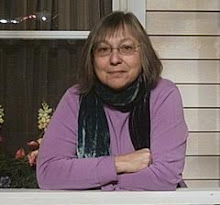
Which Williamsburg, Which spelling?
There are three distinct communities that comprise the area known as Williamsburg. The northern section is where the artists have created a vibrant community with galleries, late night music venues and trendy restaurants . South Williamsburg (south of Broadway) is the Hasidic section, not just any Hasidim but Sadmars, a highly insulated  community with their distinctive dress and communal life. East Williamsburg is a Hispanic community with deep roots in Puerto R
community with their distinctive dress and communal life. East Williamsburg is a Hispanic community with deep roots in Puerto R ican culture.
ican culture.
 community with their distinctive dress and communal life. East Williamsburg is a Hispanic community with deep roots in Puerto R
community with their distinctive dress and communal life. East Williamsburg is a Hispanic community with deep roots in Puerto R ican culture.
ican culture. With or without the H?
There are two spellings of Williamsburg, with and without the H. The current spelling without the H, came about after the after the consolidation of Williamsburgh into Brooklyn, when the H was dropped and the fabric of the neighbo rhood changed along with the spelling. The original spelling can be seen on such institutions such as the Williamsburgh Saving Bank. An interesting note is that the area was named for the surveyor Colonel Jonathan Williams, Williams + burgh, not for Richard Woodhull, the owner of the land. All he did was survey it. When he actually designed the northern battery on Governor's Island, the battery was also given his name, Castle Williams.
rhood changed along with the spelling. The original spelling can be seen on such institutions such as the Williamsburgh Saving Bank. An interesting note is that the area was named for the surveyor Colonel Jonathan Williams, Williams + burgh, not for Richard Woodhull, the owner of the land. All he did was survey it. When he actually designed the northern battery on Governor's Island, the battery was also given his name, Castle Williams.
 rhood changed along with the spelling. The original spelling can be seen on such institutions such as the Williamsburgh Saving Bank. An interesting note is that the area was named for the surveyor Colonel Jonathan Williams, Williams + burgh, not for Richard Woodhull, the owner of the land. All he did was survey it. When he actually designed the northern battery on Governor's Island, the battery was also given his name, Castle Williams.
rhood changed along with the spelling. The original spelling can be seen on such institutions such as the Williamsburgh Saving Bank. An interesting note is that the area was named for the surveyor Colonel Jonathan Williams, Williams + burgh, not for Richard Woodhull, the owner of the land. All he did was survey it. When he actually designed the northern battery on Governor's Island, the battery was also given his name, Castle Williams. Williamsburgh attracts Wealth
WilliamsburgH came into existence in the 1840s, quite late in Brooklyn historical terms, and within a 15 year period WillliamsbugH went from a town to a city and finally was incorporated into Brooklyn as the Eastern District. But more amazing than the rapid status change was the rapid growth and accumulation of wealth in the area. Think Standard Oil, Corning Glass, Pfizer, Domino sugar, Esquire Shoe Polish, Dutch Mustard : all originated in WilliamsburgH.
Names such as Vanderbilt, Jim Fisk, Charles Pratt, Charles Pfizer walked these streets, did their banking here and set up industries. The institution of the ferry to and from Manhattan and street names such as Grand do not adequately reflect the wealth that was in Williamsburgh. According to Wikipedia, ten percent of the wealth of the US was in WilliamsburgH. It became a major banking hub, and the number of banks and elegant buildings are testimony to the magnitude of the money. Three of these buildings survive today. The Kings County Savings Bank, now the Williamsburg Art & Historic Center (photo at right), looks more like a mansion than a bank.
The Williamsburg Bridge (no H)
This bridge lacks the panache of the Brooklyn Bridge, and was the second bridge to span the East River. The entrance to the bridge was in the heart of the Lower East Side of Manhattan, and the bridge became a convenient byway giving immigrants access to Brooklyn both to live and work.
Tour of North Williamsburg
http://touristforaday.blogspot.com/2009/08/tour-of-north-williamsburg-brooklyn.html
http://touristforaday.blogspot.com/2009/08/tour-of-north-williamsburg-brooklyn.html


2 comments:
Great Post!
I only noticed the strange H today!
It is similar to Pittsburgh where I came from. In that case, the H was actually dropped in the 1910's for a while.
Your blog is a pleasure to read. Will come back!
http://www.urbanartantiques.com
Its funny that Pittsburgh put back the H but Williamsburg did not.
Post a Comment